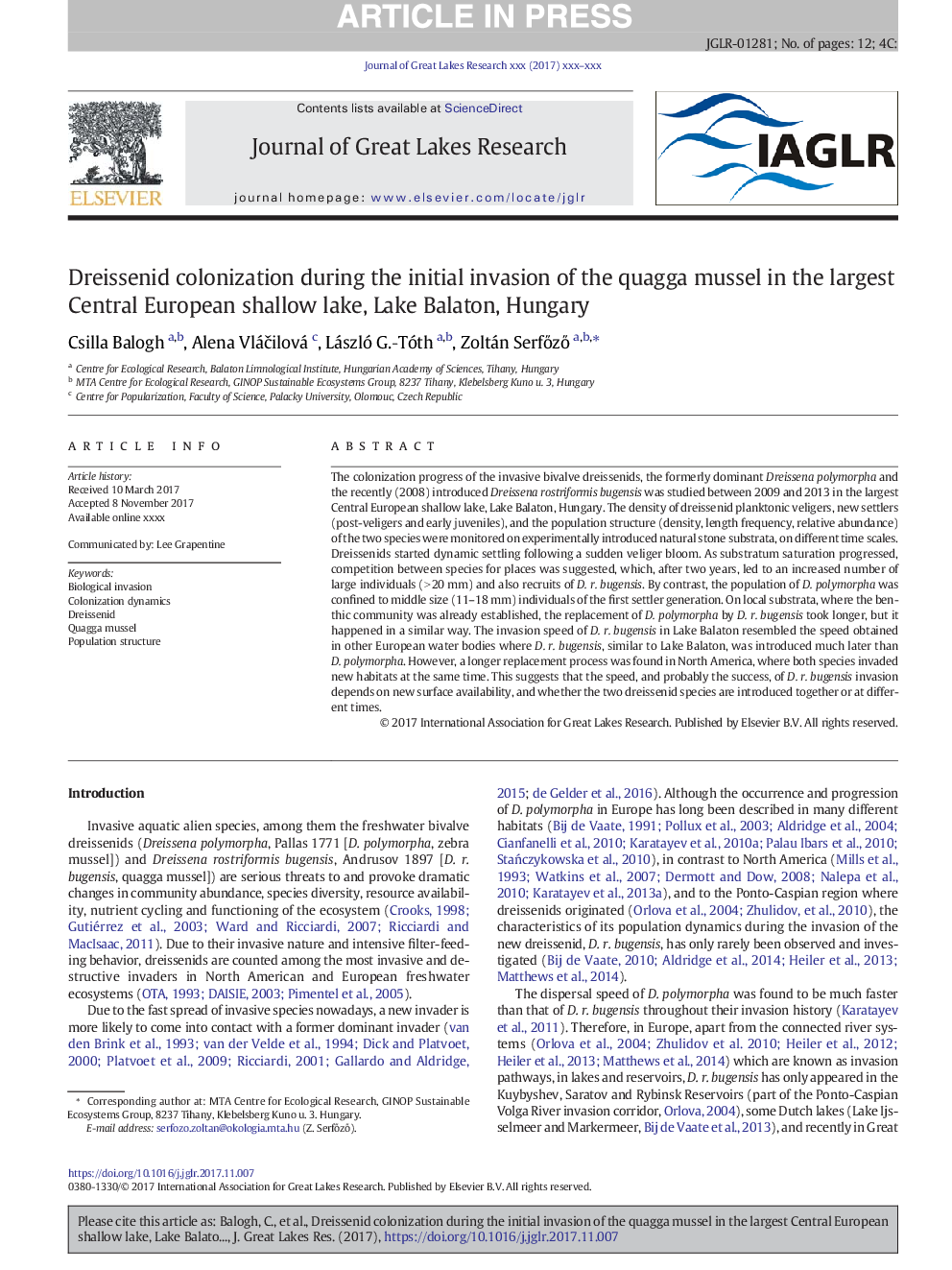| کد مقاله | کد نشریه | سال انتشار | مقاله انگلیسی | نسخه تمام متن |
|---|---|---|---|---|
| 8849160 | 1618517 | 2018 | 12 صفحه PDF | دانلود رایگان |
عنوان انگلیسی مقاله ISI
Dreissenid colonization during the initial invasion of the quagga mussel in the largest Central European shallow lake, Lake Balaton, Hungary
دانلود مقاله + سفارش ترجمه
دانلود مقاله ISI انگلیسی
رایگان برای ایرانیان
کلمات کلیدی
موضوعات مرتبط
مهندسی و علوم پایه
علوم زمین و سیارات
علوم زمین و سیاره ای (عمومی)
پیش نمایش صفحه اول مقاله

چکیده انگلیسی
The colonization progress of the invasive bivalve dreissenids, the formerly dominant Dreissena polymorpha and the recently (2008) introduced Dreissena rostriformis bugensis was studied between 2009 and 2013 in the largest Central European shallow lake, Lake Balaton, Hungary. The density of dreissenid planktonic veligers, new settlers (post-veligers and early juveniles), and the population structure (density, length frequency, relative abundance) of the two species were monitored on experimentally introduced natural stone substrata, on different time scales. Dreissenids started dynamic settling following a sudden veliger bloom. As substratum saturation progressed, competition between species for places was suggested, which, after two years, led to an increased number of large individuals (>Â 20Â mm) and also recruits of D. r. bugensis. By contrast, the population of D. polymorpha was confined to middle size (11-18Â mm) individuals of the first settler generation. On local substrata, where the benthic community was already established, the replacement of D. polymorpha by D. r. bugensis took longer, but it happened in a similar way. The invasion speed of D. r. bugensis in Lake Balaton resembled the speed obtained in other European water bodies where D. r. bugensis, similar to Lake Balaton, was introduced much later than D. polymorpha. However, a longer replacement process was found in North America, where both species invaded new habitats at the same time. This suggests that the speed, and probably the success, of D. r. bugensis invasion depends on new surface availability, and whether the two dreissenid species are introduced together or at different times.
ناشر
Database: Elsevier - ScienceDirect (ساینس دایرکت)
Journal: Journal of Great Lakes Research - Volume 44, Issue 1, February 2018, Pages 114-125
Journal: Journal of Great Lakes Research - Volume 44, Issue 1, February 2018, Pages 114-125
نویسندگان
Csilla Balogh, Alena VláÄilová, László G.âTóth, Zoltán SerfÅzÅ,